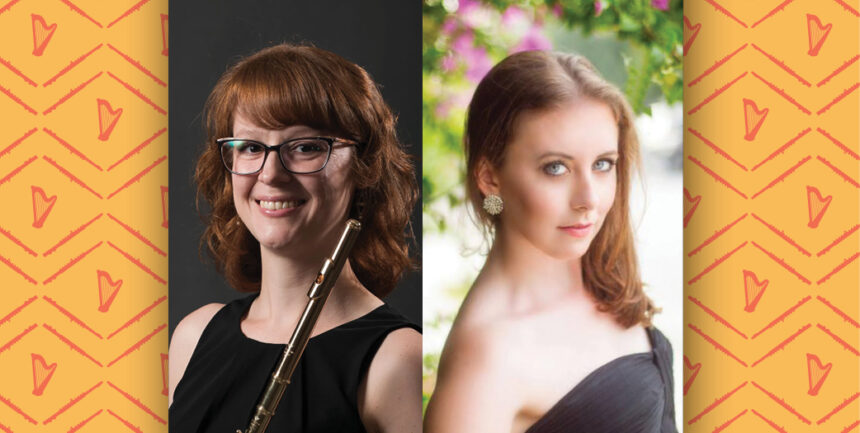Mississippi Symphony Orchestra’s “Mozart & Friends by Candlelight” concert, January 13 at Belhaven University Center for Arts, widens the spotlight to shine on the composer’s contemporaries as well, bringing in a fresh take for this popular annual chamber concert.
Still, the evening’s showcase is Wolfgang Amadeus Mozart at his most luminous. His Concerto for Flute and Harp weaves the instruments’ voices together in harmonious charm. Soloists Amulet Strange, MSO principal flutist, and Kristina Finch, MSO harpist, star in this work, relishing the interplay and taking the master’s music to delightful heights.
These instruments found MSO’s players by fate, it seems, making a home in hands that could bring out their musical best:
For Strange, her desire to be in the band in school was just a vague wish, untethered by any instrument of choice, until her mom spotted a yard sale find, turned to her and asked, “How about the flute?”
“It’s funny how that moment felt so trivial at the time,” Strange recalled. One of her favorite things about this slim instrument is the way it can fit under the seat in front of her on an airplane. “It is a very easy instrument to travel with!” A more salient favorite thing? “Getting to play with a resonant and rich tone color, which is great for projecting solo passages in the orchestra or a concerto.”
Finch’s elementary school music teacher in Williamsburg, Virginia, was a harpist. Prior to her and her sister’s pursuits, there were no musicians in Finch’s family, so she brought no background or expectation to the field. But, her teacher started a program at the school and opened it up to Finch. “We didn’t really know anything about what was available to us, and this wonderful person offered it to me, and it worked out.
“What I love most about the harp is its expressive capability,” she said. “It’s got this great ability to resonate, depending on the space that you’re in. That’s one of the reasons I’m really looking forward to these performances, in beautiful churches around Jackson. The harp sound just fills the whole space.” That leaves plenty of room for expression and musicality.
Both soloists are thrilled to be featured together, particularly in this concerto. “We met in the Ohio Light Opera pit orchestra while we were still in college,” Strange said, “before either of us moved to Mississippi.”
“It’s a beautiful, beautiful piece, and an opportunity to work with a world-class flutist like Amulet,” Finch said.
In Mozart’s Concerto for Flute and Harp these two most angelic of instruments seem to dance in the clouds, just barely tied to the earth by the rest of the orchestra. Wonderfully beautiful, charming, blissful, lively and fun are just a few of the words players and listeners settle on, trying to describe the singular pleasure that it brings.
“It always feels special to play music by one of the great classical composers,” Strange said. “It’s everything you love about Mozart, with the exquisite pairing of flute and harp.”
“In the harp community, we have a lot of concertos, but not many that are really considered standard. It’s especially important because it’s the only piece of music that Mozart ever wrote for harp,” Finch said. It’s not known if Mozart wrote the cadenzas, or musicians wrote their own. “But, we have this opportunity to pick and choose the cadenzas that we want to play and emulate, and we have found some that we really, really love…. It’s this great opportunity to do things our own way, as well as Mozart’s way.”
Technically challenging, with lots of flash and excitement for both harp and flute, it’ll flicker in the memory long after the last note sings.
At “Mozart & Friends by Candlelight” the intimate candlelit setting, warm camaraderie and charming music will work their usual magic on a chilly winter evening — now with more ‘Friends’ to share in the glow. Also on the program: Franz Josef Haydn’s Overture to Lo Speziale and his Feldparthie (Divertimento), Ignaz Pleyel’s Symphony in D and Mozart’s Symphony No. 24.

